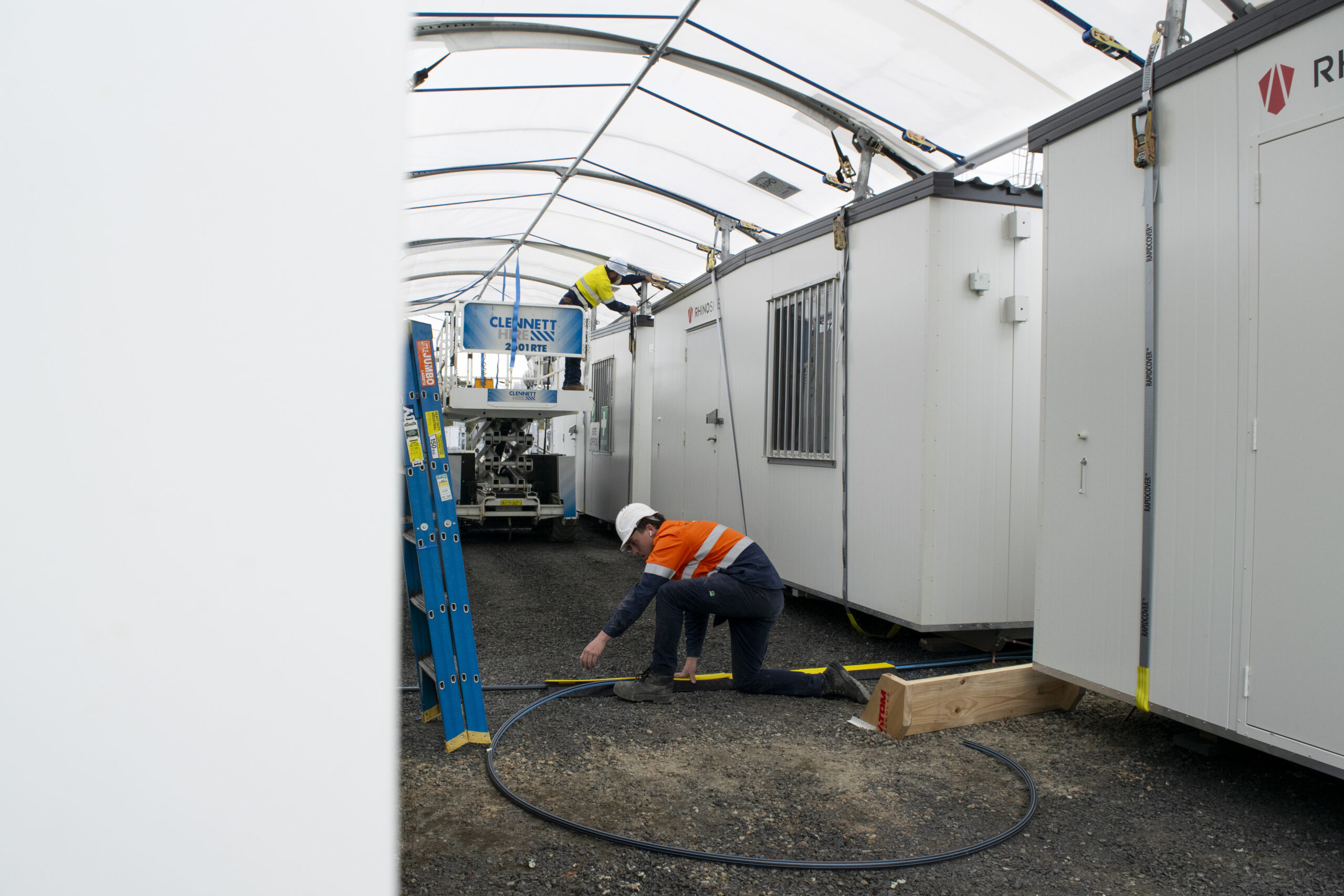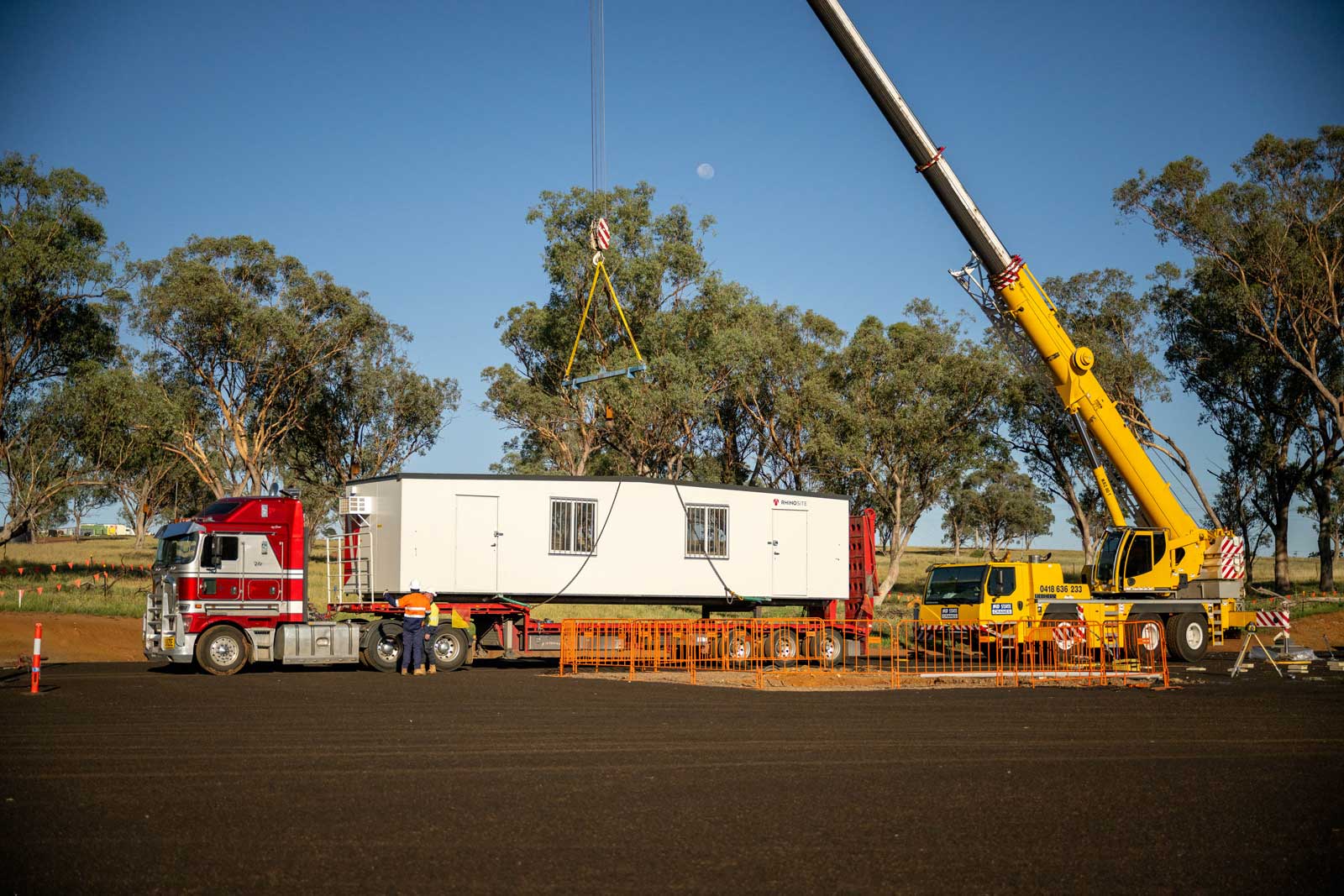If you employ workers on a construction site your business will need to provide places for the team to do their business. But exactly how many toilets (and/or urinals) do you need?
The answer will depend on a few of factors:
- The size of your workforce: The more people you have, the more on-site facilities you’ll need.
- The layout of your site: A toilet should always be within easy reach of workers who may need to wide walk their way to relief.
- Local regulations: Specific requirements can vary around Australia, as all states have their own guidelines for the provision of on-site toilet facilities.
As a general rule of thumb, the number usually hovers around one toilet for every 10 workers.
Depending on local rules, you may need separate facilities for male and female workers, you may need to provide accessible toilets for workers with disabilities, and in instances of gender affirmation an all-gender toilet may be required.
Given that health and safety guidelines are rarely page-turners, we’ve taken the liberty of doing the hard work for you, wading through the Victorian documentation and converting it into a more easily digestible format.
How many toilets does your Victorian construction site need? Read on to find out.
What are the guidelines for Victoria?
The Victorian guidelines outline the need for separate male and female facilities on certain sites. In the guidelines a toilet is referred to as a ‘pan’, and a urinal can always be substituted for a pan.
The numbers are as follows:
Male toilet requirements
| Employees/contractors | Number of pans | Number of urinals (standing space) |
| 1-5 | 1 | Nil |
| 6-10 | 1 | 1 |
| 11-20 | 2 | 2 |
| 21-35 | 3 | 4 |
| 36-50 | 4 | 6 |
| 51-75 | 5 | 7 |
| 76-100 | 6 | 8 |
| 101-120 | 7 | 9 |
| 121-140 | 8 | 10 |
| 141-160 | 9 | 11 |
| 161-180 | 10 | 12 |
| 181-200 | 11 | 13 |
| 201-235 | 12 | 14 |
| 236-270 | 13 | 15 |
| 305-340 | 14 | 16 |
Female toilet requirements
| Employees/contractors | Number of pans |
| 1-5 | 1 |
| 6-10 | 2 |
| 11-20 | 4 |
| 21-35 | 7 |
| 36-50 | 10 |
| 51-75 | 12 |
| 76-100 | 14 |
There’s only so much insight you can glean from a table, so let’s convert these numbers into some real world situations.
If you have 15 workers – 12 male and three female – you’ll need to provide:
- Two pans and two urinals for the men.
- One pan for the women.
If you have 65 workers – 41 male and 24 nine female – you’ll need to provide:
- Four pans and six urinals for the men.
- Seven pans for the women.
Note that these numbers represent minimums – depending on the site you may need more. When workers regularly get caught short on your site, it can prove a hit to both productivity and morale, to put it lightly.
Can I just provide a unisex toilet?
Why pick a bowler and a batter when you can select a capable all-rounder? A unisex toilet is an option when:
- there are 10 or fewer workers on site, and
- there are two or fewer members of one gender.
An example: if you have eight workers – six male and two female – you can provide one unisex toilet.
But if you have 11 workers – nine male and two female – you need to provide three gender-specific toilets:
- One pan and one urinal for the men.
- One pan for the women.
Do I need to provide on-site showers?
That depends: does the nature of the work mean that workers need a post-shift shower? The guidelines on this are a little more open to interpretation. As a general rule, showers should be provided on sites where workers will need to wash off at the end of their shift, such as when they’re working in particularly dusty or messy conditions. If they won’t want to jump in their car without a shower, you should provide one.
How many showers do I need to provide on my construction project?
Will a lot of employees finish their shift and require a shower at the same time? If so, providing just one shower will either be inconvenient or rather intimate.
As a general rule, there should be a minimum of one shower for every 10 employees on any site with shower requirements, though more should be provided on sites where multiple workers will need a shower at around the same time.
Separate shower facilities should be provided for men and women. One exception is on small, temporary sites, where a unisex shower can be provided if:
- the shower and the adjacent change room walls are full height, and
- the shower and change room can be locked from the inside.
Do I need to provide sanitary bins?
A nice, neat answer to this one: yes. In separate female and unisex toilets (e.g. portaloos) a sanitary bin must be provided in every toilet, while in female toilet blocks a sanitary bin must feature in every third toilet.
Helpful resources
Want to check our work? Prefer your information dry and boring? Not a problem – you can find all the relevant Victorian info, straight from the horse’s mouth, right here: https://www.worksafe.vic.gov.au/resources/compliance-code-facilities-construction
Ready to talk site sheds?
We are too. Get in touch with our friendly, expert team today.
Error: Contact form not found.








Archi-Dev
test
Sorry, the comment form is closed at this time.